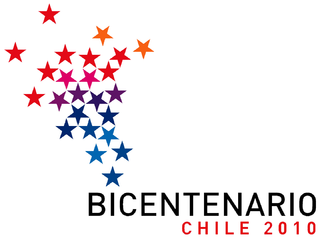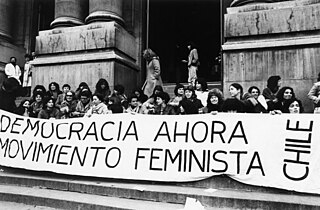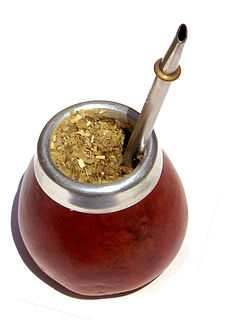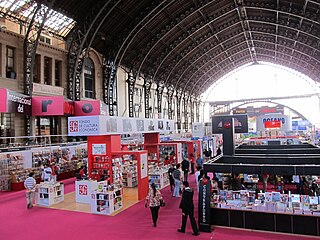 W
WThe primary beer brewed and consumed in Chile is pale lager, though the country also has a tradition of brewing corn beer, known as chicha. Chile's beer history has a strong German influence – some of the bigger beer producers are from the country's southern lake district, a region populated by a great number of German immigrants during the 19th century. Chile also produces English ale-style craft beers while also developing its own craft beer identity.
 W
WThe Bicentennial of Chile took place on September 18, 2010. The celebration commemorates the beginning of the Independence process in Chile, with the first Government Junta of Chile on September 18, 1810, and Chile's becoming a free and independent country eight years later. Several activities were prepared for this occasion by the Chilean Government.
 W
WBrama australis, the Southern Ray’s bream or Pacific pomfret, is a species of marine ray-finned fish from the family Bramidae, the pomfrets. It is found in the southern Oceans.
 W
WCafé con piernas is a coffee shop style popular in Chile where the service staff consists of females dressed in clothing considered to be revealing. Coffee shops with waitresses serving in miniskirts and heels to businessmen had long been popular, but bikinis and similar attire accelerated the trend by the mid-1990s. The shops are very numerous and popular in Santiago. It is frequently noted that the shops seem to contradict Chile's traditionally conservative culture.
 W
WCannabis in Chile is illegal for all production and public consumption, though private at-home consumption is allowed, but is widely consumed, with the highest per-capita use in Latin America. In 2014 Chile began clinical trials on medical marijuana, and in 2015 a decriminalization bill successfully passed the lower house of the Chilean Congress.
 W
WCárcel Hill is one of the 42 hills of Valparaíso, Chile. It is the site of the city's old infamous prison, which has now been turned into an urban cultural center.
 W
WA ceacheí is a battle cry that is usually used in sports events to encourage a Chilean representative. This chilenism arises from the Spanish spelling of the first three letters of the name "Chile", which is usually given to two voices that later join for its ending, in the following way:Voice 1: Ce, hache, i... Voice 2: Chi! Voice 1: Ele, e... Voice 2: Le! Both: Chi, chi, chi, le, le, le, viva Chile!
 W
WA chamanto is a traditional decorative garment from central Chile, similar to a poncho and woven in silk thread and wool. Its entire contour is finished with ribbon edging. Traditionally, Chilean festive ponchos incorporate colors such as grey, brown, red, black, and white. The difference between a chamanto and other ponchos is their reversibility, as both sides — one light, one dark — are fully finished. Traditionally, the dark side of the poncho is used during the day, while its light side is mostly worn at night.
 W
WChilean cuisine stems mainly from the combination of traditional Spanish cuisine, Chilean Mapuche culture and local ingredients, with later important influences from other European cuisines, particularly from Germany, Italy, the United Kingdom and France. The food tradition and recipes in Chile are notable for the variety of flavours and ingredients, with the country's diverse geography and climate hosting a wide range of agricultural produce, fruits and vegetables. The long coastline and the peoples' relationship with the Pacific Ocean add an immense array of seafood products to Chilean cuisine, with the country's waters home to unique species of fish, molluscs, crustaceans and algae, thanks to the oxygen-rich water carried in by the Humboldt Current. Chile is also one of the world's largest producers of wine and many Chilean recipes are enhanced and accompanied by local wines. Chilean cuisine also shares some similarities with Mediterranean cuisine, as the matorral region, stretching from 32° to 37° south, is one of the world's five Mediterranean climate zones.
 W
WChilean literature refers to all written or literary work produced in Chile or by Chilean writers. The literature of Chile is usually written in Spanish. Chile has a rich literary tradition and has been home to two Nobel prize winners, the poets Gabriela Mistral and Pablo Neruda. It has also seen three winners of the Miguel de Cervantes Prize, considered one of the most important Spanish language literature prizes: the novelist, journalist and diplomat Jorge Edwards (1998), and the poets Gonzalo Rojas (2003) and Nicanor Parra (2011).
 W
WRodeo is a traditional sport in Chile. It was declared the national sport in 1962. It has since thrived, especially in the more rural areas of the country. Chilean rodeo is different from the rodeo found in North America. In Chilean rodeo, a team consisting of two riders and two horses ride laps around an arena trying to stop a calf, pinning it against large cushions. Points are earned for every time the steer is properly driven around the corral, with deductions for faults. Rodeos are conducted in a crescent-shaped corral called a medialuna.
 W
WA Chinchinero is an urban street performer in Chile, usually a man or young boy, who plays a bass drum-type percussion instrument with long drumsticks strapped to his back which also involves a rope with a noose tied around the performer's foot to play the cymbals which also form part of this improvised instrument. Said instrument has been invented and produced informally and can carry any rhythm or melody.
 W
WThe chupalla is a traditional Chilean horseman's hat made of straw. Many people in rural areas of Central Chile use it as well. In addition, it is often used when dancing the cueca and during Chilean rodeos.
 W
WCueca is a family of musical styles and associated dances from Chile, Argentina and Bolivia. In Chile, the cueca holds the status of national dance, where it was officially declared as such by the Pinochet dictatorship on September 18, 1979.
 W
WThere are around 2,800,000 people with a disability in Chile. For the most part, citizens of Chile largely have a positive view of people with disabilities, though there is still discrimination in employment and other areas based on misconceptions about disability. The country largely uses a social model of disability in its approach to inclusive policies and laws regarding people with disability. Chile ratified the Convention on the Rights of Persons with Disability in 2008 and has passed several laws which are intended to provide rights and inclusion for people with disabilities. In 2010, Chile created the National Disability Service in order to coordinate policies regarding people with disabilities. Accessibility in Santiago is generally very good and the national parks of Chile also work to provide accessibility in natural areas owned by the state.
 W
WFeminism in Chile has its own liberation language and activist strategies for rights that is shaped by the political, economic, and social system of Chile. Beginning in the 19th century, Chilean women have been organizing with aspirations of asserting their political rights. These aspirations have had to work against the reality that Chile is one of the most socially conservative countries in Latin America. The Círculo de Estudios de la Mujer is one example of a pioneering women's organization during the Pinochet dictatorship (1973–1989) which redefined women's responsibilities and rights, linking “mothers’ rights” to women's rights and women's civil liberties. The founding members of the Círculo de Estudios de La Mujer consisted of a small group of Santiago feminists who were from the Academia de Humanismo Cristiano. These women gathered "to discuss the situation of women in Chile," their first meeting drew a crowd of over 300 participants and from there challenged the authoritarian life in Santiago. These women helped shape the rights for women in Chile.
 W
WThe Fiestas Patrias of Chile consist of two days, with a third one added on some years:18 September, in commemoration of the proclamation of the First Governing Body of 1810, and marking the beginning of the Chilean Independence process. 19 September, known as the "Day of the Glories of the Army". Since 2007, 17 September or 20 September will be included as well. Since 2017, 17 September will also be included.
 W
WFONDART or “Fondo Nacional para el Desarrollo Cultural y las Artes”, is a Chilean public program of the governmental agency Consejo Nacional de la Cultura y las Artes which provides public funding for projects dedicated to the promotion of arts, culture, and heritage. The Council headquarters are located in Plaza Sotomayor, Valparaíso.
 W
WJuan Francisco González Escobar is known as one of the four Great Chilean Masters and as the archetypal romantic bohemian artist of the early 20th century. He was the most prolific of the Chilean masters, leaving an estimated 4,000 works, and was also notable for being one of Chile's first modern painters. He was seen as a symbol of the new creative generation that appeared in 20th century Chile, with a style highly influenced by impressionism and local elements.
 W
WA huaso is a Chilean countryman and skilled horseman, similar to the American cowboy or Mexican charro, the gaucho of Argentina, Uruguay and Rio Grande Do Sul and the Australian stockman. A female huaso is called a huasa, although the term china is far more commonly used for his wife or sweetheart, whose dress can be seen in cueca dancing. Huasos are found all over Central and Southern Chile while the Aysén and Magallanes Region sheep raisers are gauchos. The major difference between the huaso and the gaucho is that huasos are involved in farming as well as cattle herding.
 W
WThe indio pícaro is a traditional Chilean wooden statuette referencing a Mapuche Indian with a broad smile that, when the body is lifted, shows an erect penis or pubic hair. The indio pícaro is found in traditional artisan shops in south-central Chile. It is usually made of wood, and generally viewed as a "gag gift" or joke, sometimes as decoration.
 W
WKomikan is a two-player abstract strategy board game of the Mapuches from Chile and Argentina. The same game is also played by the Incas under the name Taptana, Komina, Comina, Cumi, Puma, or Inca Chess. In modern Quechua, the language of the ethnolinguistic group that are the descendants of the Incas, Taptana means "chess". It is known by the Aymaras, a neighboring ethnolinguistic group to the Quechuan people, as kumisiña. Throughout South America the game is known as El león y las ovejas which literally means "the lion and the sheep". The lion is actually a puma as there are no lions native to the Americas. The Mapuches also call it El Leoncito. J. I. Molina, in 1787, described it as ‘el artificioso juego del ajedrez, al cual dan el nombre de comican’ which translates to "the ingenious game of chess to which they give the name comican". Komikan may actually be the same game as Adugo as played by the Bororó people of Brazil. in 1898, Stewart Culin, the famed anthropologist, named a game played in Peru as Solitario. The same name was also used by the game historian, Murray, in 1952. The game may also be known in Peru as Kukuli. Komikan is a hunt game, and specifically a tiger hunt game since it uses an expanded Alquerque board. Like all hunt games, there are two unequal forces at play. In Komikan, one player has only a single piece, usually called a "puma" or "jaguar", or "kom ikelu", or "leon", which can move one space at a time or capture the other player's pieces by hopping over them. The other player has twelve pieces, or perros or perritos which is Spanish for "dogs" and "little dogs" respectively, that can only move one space at a time, but not capture, and attempts only to surround and immobilize the puma or jaguar. Pieces must move and/or capture following the pattern on the board. The expanded Alquerque board consist of an Alquerque board and a triangular patterned board attached on one of its side.
 W
WMate or maté also known as chimarrão or cimarrón, is a traditional South American caffeine-rich infused drink. It is made by soaking dried leaves of the holly species Ilex paraguariensis in hot water and is served with a metal straw in a container typically made from a calabash gourd.
 W
WMate cocido, maté tea, kojoi, or yerbiado is an infusion typical of Southern Cone cuisine. It is traditionally prepared by boiling yerba mate in water, then strained and served in cups. It is a bitter tasting beverage, similar to mate but milder, with the same stimulating and nutritional properties. It is also sold in tea-bags, so it can be prepared like tea.
 W
WPascual Ortega Portales was a notable Chilean painter. His art fits into the categories of romanticism and realism.
 W
WPais is a red wine grape that has played a prominent role in the Chilean wine industry. Up until the turn of the 21st century, it was Chile's most planted variety until it was overtaken by Cabernet Sauvignon. Today it is most commonly used in the production of jug wine in the Bío-Bío, Maule and Itata River regions in the south. The grape is sometimes known as Negra Peruana. In Argentina the grape is known as Criolla Chica.
 W
WRoto, f. rota, is a term used to refer to Chilean people and in particular to the common Chilean. In Chile from the start of the 20th century it was applied with a negative classist connotation to poor city-dwellers. It is also used contemptuously in other Spanish-speaking countries, especially Bolivia and Peru, to refer to Chileans in a derogatory manner. Otherwise, despite its defects, the roto is also considered a figure of national identity and pride in Chile.
 W
WThe Santiago International Book Fair is an annual book fair held in Santiago, Chile, during October–December. It is organised by the Chilean Chamber for Books.
 W
WA tembetá or barbote (Argentina) is a metal or stone rod placed in lower lip piercings by members of some indigenous peoples in South America. It has been used since the Neolithic period by different human groups for body modification, spiritual protection, and indication of sexual maturity.
 W
WWillkakuti, Machaq Mara, Mara T'aqa, Jach'a Laymi or Pacha Kuti is an Aymara celebration in Bolivia, Chile and in the Southern Peru which takes place annually on 21 June, commemorating the winter solstice in the Southern Hemisphere.